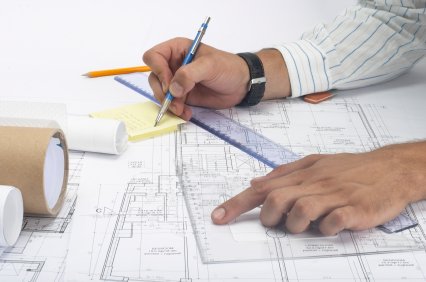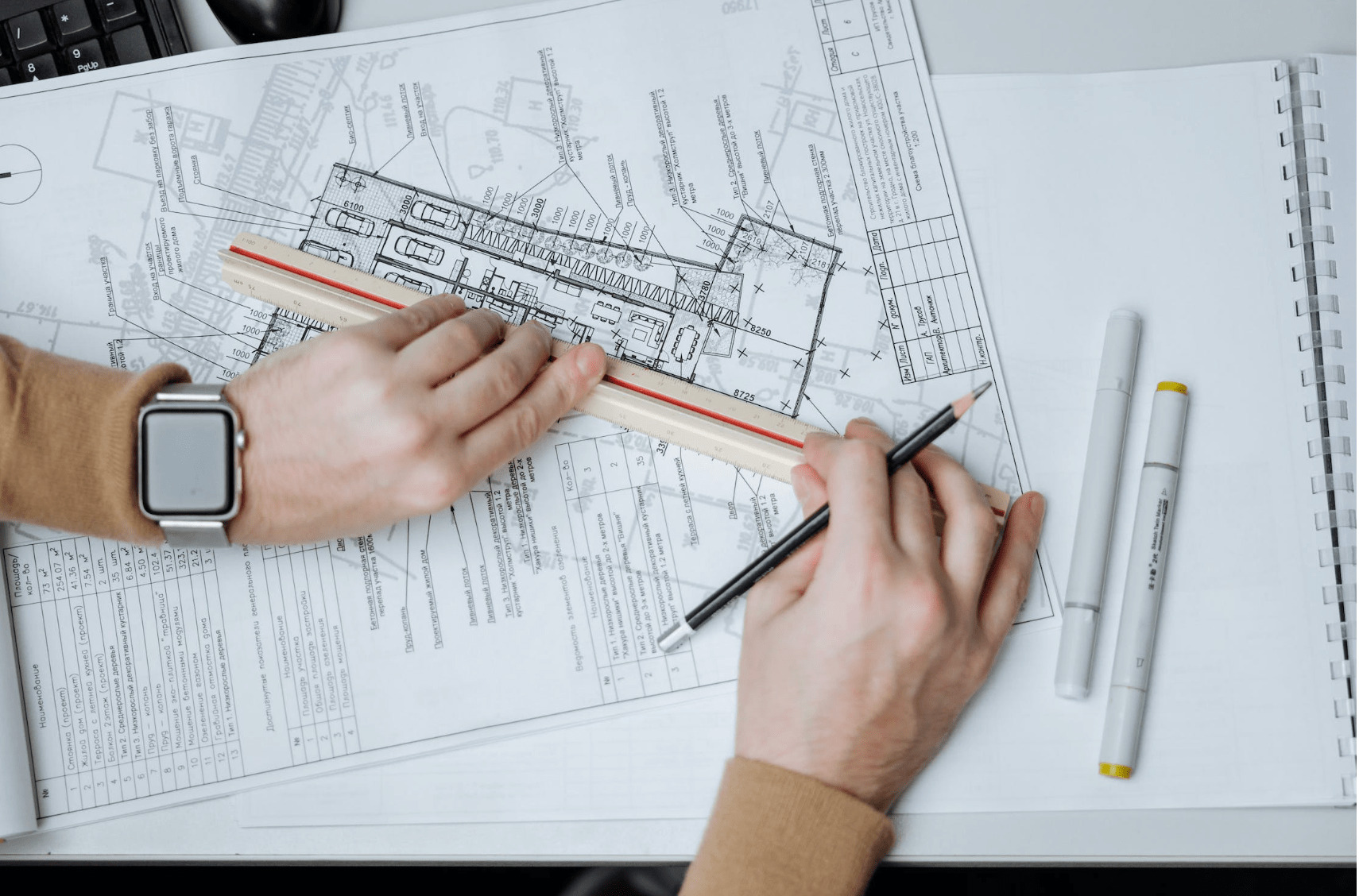Recognizing the Diverse Profession Paths Available for Aspiring Architect
As an ambitious Architect, you have a world of occupation courses waiting for you. Whether you're drawn to conventional style or the subtleties of sustainable style, there's a particular niche that aligns with your rate of interests.
Typical Architecture: Designing Structures and Frameworks
Conventional design focuses on making buildings and frameworks that blend capability with aesthetic charm. As you explore this area, you'll appreciate the elaborate balance in between kind and objective. You'll learn to draw inspiration from historical styles, incorporating aspects like balance, materials, and craftsmanship. Your designs can reflect cultural heritage, showcasing local traditions while meeting modern needs.
You'll establish skills in preparing, model-making, and site evaluation, allowing you to envision and communicate your concepts efficiently. Engaging with customers, you'll require to recognize their vision and equate it into practical styles.
Moreover, developing codes and sustainability methods are necessary in your job, guaranteeing your structures are risk-free and ecologically pleasant. As you expand in your job, you'll find possibilities in household, commercial, and even restoration jobs, each offering unique difficulties. Embracing traditional design leads the way for a satisfying profession that pays homage to the past while forming the future.
Urban Planning: Shaping Communities and Public Spaces
As an ambitious Architect, you can play a vital role as a city planner, changing exactly how areas connect and work. By using neighborhood involvement techniques, you'll assure that locals have a voice fit their environment. And also, incorporating sustainable layout principles will certainly help produce spaces that not only fulfill today's requirements yet also secure the future.
Function of Urban Planners
While numerous may assume of engineers as the single visionaries behind structures, city planners play a crucial role in shaping the broader landscape of communities and public spaces. By teaming up with different stakeholders, you'll aid make parks, transportation systems, and domestic areas that advertise social interaction and accessibility. Your knowledge in spatial style and neighborhood dynamics allows you to visualize future development while maintaining social heritage.
Area Involvement Methods
Reliable community involvement techniques are essential for metropolitan coordinators to guarantee that the voices of locals are heard and valued in the planning procedure. To foster meaningful dialogue, you need to focus on open discussion forums and workshops where area participants can express their ideas and concerns. By actively incorporating and listening comments, you'll produce spaces that reflect the neighborhood's requirements, eventually leading to even more effective and lasting urban environments.
Sustainable Design Principles
When designing urban rooms, including lasting style principles is vital for developing atmospheres that prosper both environmentally and socially. You ought to begin by concentrating on energy efficiency, using products that lower waste and advertise recycling. Think about integrating environment-friendly rooms, like yards and parks, to improve biodiversity and enhance air quality. Advertising walkability and public transportation can reduce reliance on cars, cultivating a much healthier community.
Creating with water conservation in mind is additionally essential-- think of rain yards and permeable surface areas to handle stormwater. Entailing neighborhood participants during the preparation procedure warranties that the areas you create satisfy their demands and motivate social communication. By embracing these concepts, you'll add to dynamic, lasting urban landscapes that profit everyone.

Landscape Design: Producing Sustainable Exterior Atmospheres
As you explore landscape style, you'll find essential layout principles that develop attractive and practical outside spaces. Lasting practices play a vital role in ensuring these atmospheres thrive while lessening environmental influence. Plus, you'll locate a variety of job opportunities that permit you to make a genuine distinction in exactly how individuals interact with nature.
Layout Principles in Landscape
Comprehending design principles in landscape style is necessary for creating lasting outdoor atmospheres that integrate with nature. You'll need to consider elements like equilibrium, scale, and percentage to assure your layouts feel cohesive and welcoming. Incorporating native plants not only boosts biodiversity yet also decreases water use, making your landscape resistant. Think of the circulation of space and how individuals communicate with it; paths and seating areas ought to welcome expedition and leisure. Furthermore, focus on seasonal modifications, making with products that complement the surroundings year-round (Architect). By prioritizing sustainability and aesthetics, you can create outdoor areas that enhance the neighborhood and promote wellness. Accepting these concepts will certainly set a solid foundation for your occupation in landscape style.
Sustainable Practices Overview
Sustainable practices in landscape design not just focus on appearances however additionally prioritize eco-friendly health and source conservation. You can create areas that promote dirt health and wellness, such as utilizing organic products and practicing permaculture concepts. Ultimately, these methods assure your layouts profit both individuals and the environment for years to come.
Profession Opportunities Exploration
With a strong foundation in sustainable methods, landscape design offers a selection of occupation paths that allow you to make a meaningful influence on the setting. Urban organizers often work together with landscape designers to produce environment-friendly areas in urban settings, boosting city livability. If you're enthusiastic about education, take into consideration ending up being a landscape design instructor, inspiring future generations.
Lasting Style: Concentrating On Eco-Friendly Practices
As you discover your career in design, embracing green methods can establish you apart in an affordable field. Lasting layout concentrates on developing buildings that lessen environmental effect while boosting resident health. By incorporating sustainable materials, energy-efficient systems, and sustainable structure techniques, you'll add to a greener future.
Begin by gaining understanding of environment-friendly accreditations like LEED or BREEAM, which can strengthen your credentials. Consider exactly how all-natural light, ventilation, and thermal effectiveness can enhance layout. Collaborate with engineers and environmental professionals to introduce services that minimize waste and preserve sources.
Do not forget the significance of neighborhood participation-- interesting neighborhood stakeholders can inspire designs that harmonize with the atmosphere. As clients progressively prioritize sustainability, your knowledge in green techniques will certainly not just bring in tasks yet additionally fulfill your passion for responsible architecture. Embrace this essential element of the occupation, and view your profession thrive.
Historic Preservation: Protecting and Restoring Cultural Heritage
While you commence on your building trip, take into consideration the crucial duty of historical preservation in maintaining our cultural heritage. This area concentrates on the security and repair of considerable buildings, websites, and frameworks that tell the stories of our past. By taking part in historical preservation, you'll help safeguard the architectural legacy that forms neighborhood identification.
As a historic preservation Architect, you'll analyze historical significance and examine the problem of frameworks. You'll function carefully with historians and preservationists to guarantee authentic reconstruction methods are utilized. This occupation path enables you to blend creativity with study, allowing you to make remedies that value original products and craftsmanship.
Your work not only adds to sustainability by recycling existing structures but also fosters a sense of satisfaction within areas. Welcoming this path will certainly assist you come to be a guardian of history, preserving the tales and aesthetic appeals that enrich our lives.
Interior Design: Enhancing Indoor Spaces
Historic conservation and interior style both share a dedication to enhancing the built setting, yet they focus on different elements. While historical conservation highlights keeping a framework's historical and social worth, interior architecture nos in on enhancing indoor areas for capability and appearances.
As an ambitious Architect, you'll locate that interior style allows you to mix imagination with technical skills. You'll develop rooms that not only look excellent but additionally advertise comfort and effectiveness. This area entails Go Here comprehending just how light, shade, and materials engage within a room, influencing mood and usability.
You'll work on numerous tasks, from household homes to industrial offices, making sure that each atmosphere meets the demands of its passengers. By focusing on user experience, you can change insides into practical and inspiring spaces, making a substantial influence on just how individuals link engage with their surroundings. Accept the chance to enhance indoor atmospheres and form the way individuals function and live.
Industrial Design: Combining Capability With Looks
Commercial style plays a crucial duty in creating products that perfectly blend aesthetics with capability, guaranteeing that what you make use of daily is not only visually attractive but likewise sensible. As an aspiring Architect, you might engage yourself in this area, concentrating on creating whatever from furnishings to consumer electronics. Your work involves understanding user requirements, products, and manufacturing processes, allowing you to develop innovative solutions that improve everyday experiences.
In industrial style, you'll commonly team up with marketing professionals, producers, and designers, guaranteeing that your styles are not only lovely yet also practical. You'll learn to stabilize kind and feature, prioritizing usability without sacrificing design. By developing your skills in sketching, 3D modeling, and prototyping, you'll be well-equipped to bring your concepts to life. This profession course offers a dynamic environment where creative thinking meets usefulness, making it a rewarding choice for designers thinking about forming the items of tomorrow.
Frequently Asked Concerns
What Educational Credentials Do I Required to Become a Designer?
To come to be an engineer, you'll require an expert degree in design, normally a Bachelor's or Master's. Additionally, you'll need to finish a teaching fellowship and pass the Architect Enrollment Exam to exercise lawfully.
Exist Qualification Requirements for Different Building Job Paths?
Yes, there're qualification needs for various architectural paths. Architect. You'll require to pass exams, total internships, and often go after specialized training, relying on your selected focus, like landscape style, urban design, or historical preservation
What Software Program Skills Are Important for Engineers Today?

How Can I Gain Practical Experience While Researching Design?
You can obtain sensible experience by interning at building companies, joining design competitions, volunteering for neighborhood tasks, or teaming up with classmates on real-world assignments. These chances enhance your skills and develop useful links in the sector.
What Work Opportunities Exist Outdoors Conventional Architecture Firms?
You can explore numerous task possibilities outside traditional architecture firms, like metropolitan preparation, interior decoration, landscape style, building management, property growth, or also duties in sustainability consulting. Each offers unique challenges and benefits.
Whether you're drawn to conventional design or the nuances of sustainable style, there's a particular niche that aligns with your passions.When making urban spaces, including lasting design principles is essential for producing settings that prosper both ecologically and socially.As you explore landscape architecture, you'll uncover necessary layout concepts that create functional and attractive exterior rooms.Understanding style principles in landscape architecture is necessary for developing sustainable exterior index atmospheres that integrate with nature.In industrial layout, you'll usually work together with engineers, online marketers, and suppliers, guaranteeing that your designs are not only lovely yet additionally viable.